The Other (1972)
Directed by: Robert Mulligan
Written by: Tom Tryon
Starring: Chris Udvarnoky, Diana Muldaur, Martin Udvarnoky, Uta Hagen
USA
ON DUAL FORMAT BLU-RAY AND DVD: February 23rd, from EUREKA ENTERTAINMENT
RUNNING TIME: 100 min
REVIEWED BY: Dr Lenera, Official HCF Critic
It’s a seemingly idyllic summer in 1935, and identical twins Niles and Holland Perry live with their family on a Connecticut farm. Their mother is a recluse in her upstairs bedroom, grieving over the recent death of the boys’ father in the apple cellar, while their grandmother Ada, a Russian emigrant, dotes on Niles, and has taught him a psychic ability to project himself outside of his body, for example in a bird, which she calls “the great game.” It’s just as well, because Niles is always covering for the bad behaviour of his brother, behaviour that soon begins to get out of hand….
The horror genre is full of films which play on the potential creepiness of children, and after watching The Other, I reckon I’ll think twice about going near a young boy for a few days. It’s actually quite an odd sort of horror film, even compared to many other chillers which also take a subtle approach. It mostly takes place in broad daylight and tends to avoid both shocks and suspense even though plenty of nasty things occur. Watching it for the first time, and I don’t know why it had taken me so long to see this minor gem, I got a little impatient waiting for the ‘big moments’, and felt a little unsatisfied as the film ended, but its quietly eerie atmosphere remained all-encompassing, and when I thought about the film for a few minutes after it finished, I came to the conclusion that it will stay with me far longer than the other horror films I’ve seen recently which take a more conventional approach. It also has a knock-out twist that certainly influenced certain later, better known horror films, but, in a good example of how the film doesn’t like to do the obvious, it does a Vertigo and gives it to us not at the end but two thirds of the way through, forcing the viewer to watch the rest of the film in a different way, and making the proceedings more psychologically disturbing.
The Other was based on a book by Tom Tryon [a popular writer who played the husband in I Married A Monster From Outer Space], and he also wrote the screenplay and co-produced. He was even considered to direct until it was decided that Robert Mulligan, who had just had a hit with Summer Of 42, had the job. Mulligan hoped to shoot the film in Connecticut where the story takes place, but it would have been too obvious that it was autumn and not summer, so it was filmed in California. Tryon wanted Ingrid Bergman for the role of Ada the grandmother, and Mark Lester for the dual roles of Niles and Holland, but Bergman had a stage commitment and Lester turned his role[s] down. In the end the cast didn’t have any major stars in it, though John Ritter can be spotted in an early role. During post-production Mulligan cut a lot of footage from the film, causing Tryon to claim that The Other was ruined because of this, and the film, while not talked about much now, was not a box office success. Early US TV showings altered the film’s final lines so “the bad guy doesn’t get away with it.”
We first meet little Niles sitting alone in the middle of a forest, the camera slowly zooming in to him in a quite beautiful shot. All seems idyllic, but somehow, already, there is a feeling of menace, something only increased by the noise of a twig something. This is something the film achieves throughout without even seeming to try. The gorgeous cinematography of Robert Surtees makes the farmyard setting really come alive and enhances the nostalgic ‘lost summer’ feel that director Robert Mulligan also evoked so well in To Kill A Mockingbird and Summer Of 42, but something feels ‘off’ right from the outset. There doesn’t seem anything wrong with Niles, but his twin Holland really is a strange one. He’s pretty malicious, like many little boys are, and has a habit of getting his brother blamed for bad things that he has actually done, but he doesn’t seem to socialise with anyone except his brother and prefers to skulk around. Then again, it’s hardly surprising considering their father has recently died, the cellar trapdoor falling on him and sending him falling down the steps to his death in a good example of a screen death which avoids lingering on the details but is still quite shocking. Their mother is grieving and doesn’t like coming out of her bedroom. Only their grandmother Ada seems to be there for Niles, and we see that Niles has only one true respite from his rather sad life is when he astrally projects himself into the body of a bird and is flying all over the countryside.
It’s rather irritating that Niles keeps covering for Holland and doesn’t just tell the troublemaker to bugger off, but then their relationship has an odd feel, something enhanced not only by the fact that Niles keeps their father’s ring and a severed finger that Holland gave him, but also because Mulligan opts to never show both brothers in the same shot except for a few of long pans, something which gives the impression that the twins are being played by one person. All this is taken at a fairly leisurely pace, despite an increasing number of accidents and deaths. Bloodshed is mostly avoided, but Holland scaring a woman into having a heart attack just by waving a rat in her face really is quite unsettling, especially because Holland is dressed up like a circus magician he watched a few scenes before. The twist actually makes perfect sense unlike many more recent examples that just make you go “What the ****”, but there are hints thereafter that there’s more to it, and maybe, just maybe, we have been misled. As the film approaches its climax, Mulligan finally decides to have a major scene take place not just at night time but during a thunderstorm amidst some striking blue-tinged photography way before it became often employed, and we get a truly nasty shock which is 1972’s version of the head in a box from Seven. During the lead up to the scene, I did actually guess what I thought I was going to see, but still hoped it wouldn’t be the case. I’m surprised it isn’t better known.
The final few scenes seem a little rushed and one wonders if this was where much of the cuts occurred, but nonetheless there’s a terrific ambiguity going on all the way up to the final chilling shot of a boy looking out of a window [something echoed in House By The Cemetery and others, but actually watching this film I could see elements of The Sixth Sense, The Shining and quite a few others], and this is one of those films that you can really interpret several ways. Some material in the first half seems like filler, but sometimes makes more sense later on when it is echoed. In particular, there’s a visit to the back of a circus tent during a performance where the boys find a deformed baby in a bottle and a hideously deformed man looms at them in one of the film’s few bits of traditional horror scares. The scene seems to be thrown in but it actually partly foreshadows something near the end in what is a really cleverly constructed piece.
The twins Chris and Martin Udvarnovsky are slightly awkward in the early scenes but, as if the film was shot in sequence, quickly become very impressive. Chris has the harder of the two roles [Niles] but really comes through with a very affecting performance which only adds to the ambiguity and quietly disturbing nature of the film. Jerry Goldsmith’s score, which at times uses a very lyrical theme with a subtly dark edge which is a forerunner one of the main themes in his score for The Omen, had much material removed from the final cut of the film and only really plays a major part in the first half. The Other is an overlooked minor horror classic, and definitely one of the best ‘evil twin’ movies, that may not be the most enjoyable of films to watch – in fact it’s quite depressing – but probably won’t leave your brain for quite a while. It dares to say that enriching a child’s imagination may not be a good thing, but its chill just won’t go away primarily because it reminds us that more terror probably exists in broad daylight, away from any shadows, than in darkness… and of course how creepy a child can actually be. Though rather short on special features, Eureka Entertainment’s Blu-ray, aside from a few instances where grain distribution seems a bit uneven, looks excellent.
Rating: 









SPECIAL FEATURES
* Beautiful 1080p high-definition transfer on the Blu-ray and a progressive DVD encode
* Optional English subtitles for the deaf and hard of hearing
* Original theatrical trailer
* 36-page booklet featuring new writing by critic and programmer Aaron Hillis, a 1972 interview with Robert Mulligan, and rare archival imagery

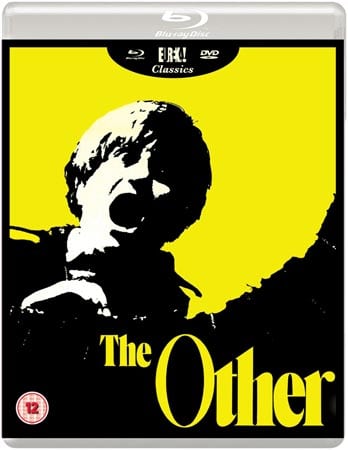
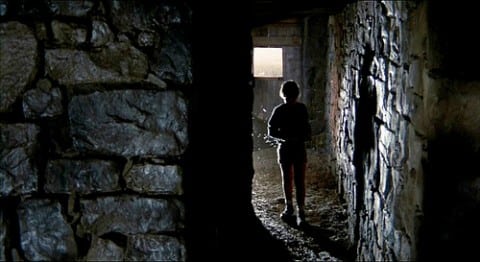
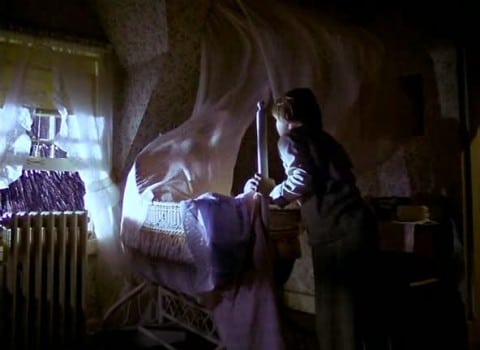

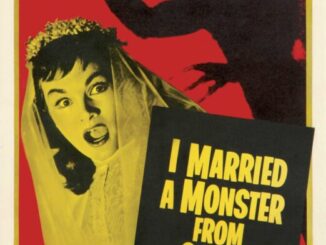
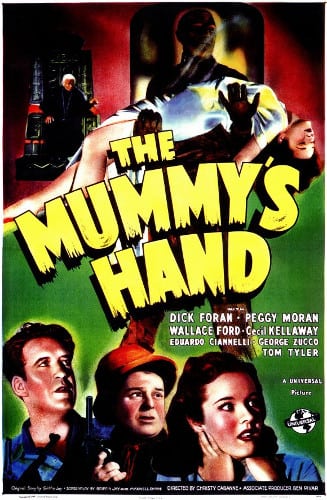
Be the first to comment